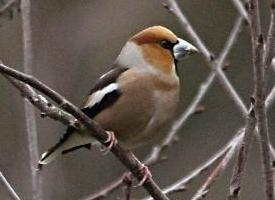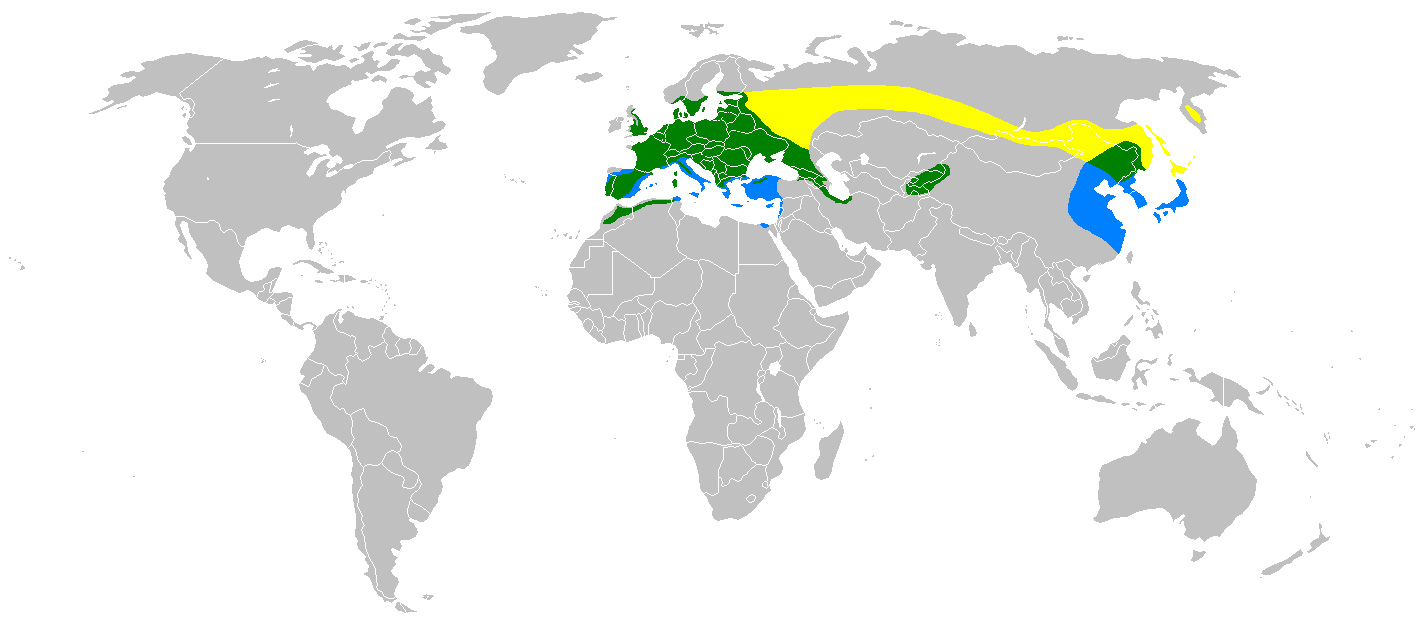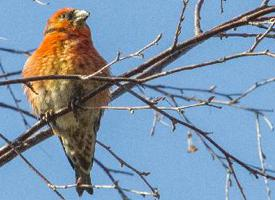
Greutăți și măsuri
| Lungime | 18 cm |
|---|---|
| Greutate | de la 48 la 62 g |
| Lungimea anvergurii aripilor | de la 29 la 33 cm |
Date biologice
| Durata de viață | de la 2 la 5 ani |
|---|
Descrierea animalului
The Hawfinch (Coccothraustes coccothraustes) is a strikingly robust passerine bird belonging to the finch family, Fringillidae. Known for its powerful bill and distinctive appearance, this species is found across Europe and Asia, inhabiting deciduous woodlands, especially areas with a high density of hornbeam and cherry trees which provide its favored seeds.With an impressive size for a finch, the Hawfinch can reach a length of approximately 16.5 to 18 cm (6.5 to 7.1 inches), and it boasts a robust body, a large head, and a thick neck. Its wingspan ranges from 29 to 33 cm (11 to 13 inches), enabling a strong and direct flight. Weighing between 48 to 62 grams (1.7 to 2.2 ounces), the Hawfinch is one of the largest and most powerful finches.
The bird's most notable feature is its large conical bill, which is metallic blue-grey in color and appears almost disproportionately large for its head. This bill is specially adapted to crack open hard seeds and pits with ease, a testament to the bird's incredible strength. The Hawfinch can exert a tremendous pressure between its mandibles, making it one of the few birds capable of breaking open the hard shells of cherry and olive stones.
In terms of plumage, the Hawfinch is equally distinctive. Males have a rich chestnut-brown coloration on their backs, napes, and crowns, which contrasts with their black bibs, tails, and primary wing feathers. The cheeks are a soft gray, and a black eyestripe runs through the eyes, giving the bird a somewhat masked appearance. The underparts are a paler buff-orange, adding to its colorful display. Females and juveniles are generally duller and more muted in color but share the same overall pattern.
During the breeding season, which typically occurs from April to June, Hawfinches build their nests in trees, preferring the security of high branches. The female lays a clutch of about 2 to 7 eggs, which are blue-green with speckles, and she is primarily responsible for incubating them. Both parents participate in feeding the chicks, which fledge after about two to three weeks.
Hawfinches are often elusive and shy, making them a challenging species for birdwatchers to spot. They tend to be most active during dawn and dusk, feeding on a diet that includes seeds, particularly those with hard outer shells, as well as buds, berries, and occasionally insects. In winter, they may form small flocks and can sometimes be seen visiting gardens with seed feeders.
Despite their elusive nature, the distinctive call of the Hawfinch can be a giveaway. Their song is a soft and melodic "tick" sound, which is often repeated. During courtship, males may perform a more complex song consisting of a series of melodious notes.
In terms of conservation, the Hawfinch has faced declines in parts of its range due to habitat loss and changes in forestry practices. However, it is not currently considered globally threatened and is listed as Least Concern on the IUCN Red List. Conservation efforts aimed at preserving and managing woodland habitats are essential for maintaining healthy populations of this remarkable bird.
Harta răspândirii

Animale similare
Fotografii noi cu animale
Top 10 animale
- Dolphin gull (Leucophaeus scoresbii)
- Diana monkey (Cercopithecus diana)
- Moustached guenon (Cercopithecus cephus)
- Galápagos tortoise (Geochelone nigra complex)
- Stone loach (Barbatula barbatula)
- Greek tortoise (Testudo graeca)
- Japanese macaque (Macaca fuscata)
- Russian tortoise (Testudo horsfieldii)
- Common flying dragon (Draco volans)
- Galápagos penguin (Spheniscus mendiculus)


